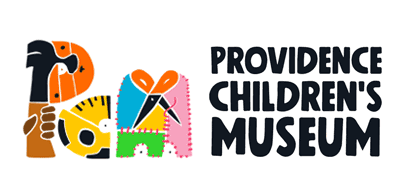Coming to Rhode Island
Take a time-traveling adventure and meet real people who came to Rhode Island from many different countries. Hear their stories and find out why they came, what they brought and how they changed the Ocean State.
We all have stories about our families and how they came to the United States. While each of us reflects our individual culture, we share a common bond. Almost everyone living in Rhode Island has family roots in another country. Each group has experienced being new and different and all have brought customs, objects and perspectives that continue to enrich our communities. Coming to Rhode Island celebrates the cultural diversity of the Ocean State.
In the exhibit’s four story galleries, visitors discover the stories of actual people who immigrated to Rhode Island. The galleries are set in their historical context from an English colonist’s farm to a Latino bodega in the 1960s. Hands-on activities bring the stories to life. Children work as masons in a partial reproduction of the construction and living sites at Fort Adams in Newport, set in 1835, and climb aboard a replica packet ship to learn about the voyage from the Cape Verde islands.
The exhibit culminates in the Story Center, where families engage in activities exploring culture, diversity and individual differences and discover a wider range of stories of living in and coming to Rhode Island, including their own stories. Play games and discover music from around the world, draw a self-portrait and share something that’s important about you that nobody sees, interact with an art installation to discover how something (or someone) looks from different and unexpected perspectives, and browse books representing many people and cultures.
Coming to Rhode Island is recommended for children ages 4 and up – and their adult caregivers – for maximum understanding. Very young children also enjoy pretending in the exhibit’s historical environments.
Some things to do in Coming to Rhode Island
Preschoolers:
- Take care of Elizabeth Mott’s cow.
- Plant and harvest vegetables from John Quigley’s garden.
- Steer Antonio Coelho’s big ship. Go down below and find a place to sleep.
- Go grocery shopping in Doña Fefa’s market.
- Look at a book in the Story Center about someplace far away.
Ages 5 to 7:
- Prepare a stew in Elizabeth Mott’s house. Figure out how Elizabeth’s family cooked and what kinds of food they ate.
- Work as a mason at Fort Adams. Build an arch and stack bricks to make a strong wall.
- Load Antonio Coelho’s ship with crates for the journey to Cape Verde and set sail. Raise the anchor and steer the ship.
- Pick up the phone in Doña Fefa’s market and listen to the conversation. Do you understand what they are saying? What language are they speaking?
- Dance to the music of world cultures in the Story Center.
Ages 8 and up:
- Some things the Mott family used came from England, some things the colonists made or grew themselves, and for others, they traded with the native people. Figure out where the different things in Elizabeth’s house came from.
- Help build Fort Adams. Figure out which brick patterns build the strongest walls. How tall a wall can you construct?
- Go below deck in Antonio Coelho’s ship and find the chicken. Why did the sailors bring live chickens with them? What else did the sailors and passengers take with them? Check the ship’s hold to be sure they have all their supplies.
- Who was President of the United States in 1961? Find his picture in Doña Fefa’s market and figure out why Doña Fefa admired him so much.
- Explore the history hunts and search through the story galleries to figure out why each of the immigrants came to Rhode Island, what they brought with them and what they left behind.
- Challenge a friend to a game of Mancala in the Story Center. Try a new version from around the world or make up your own rules.
- Draw a portrait of yourself and share something that’s important about you that nobody sees in the Story Center.
Adults:
- Notice and appreciate the value of pretend play for building both empathy and the skills necessary to appreciate diversity and live in the world today.
- Explore the history of the real immigrants in the story galleries and on the story cubes in the Story Center.
- Share your own family’s story about coming to or living in the United States with your children.

